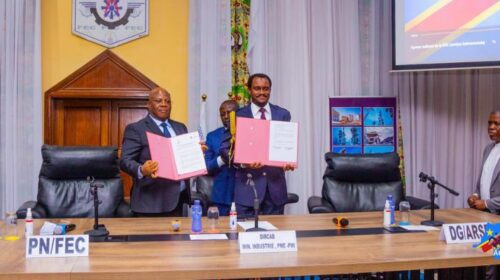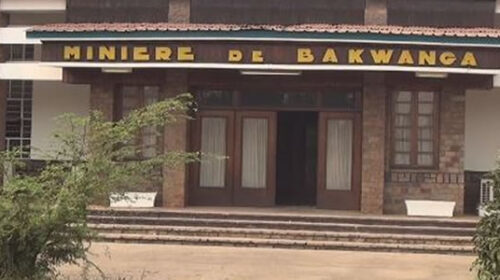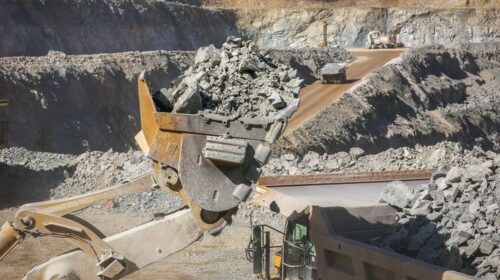3 civil society coalitions in DRC call on government to clarify mechanisms on management and sharing of 25% and 15% of the mining royalty
The “Congo is not for sale” campaign (CNPAV), the MAKUTA YA MAENDELO coalition and the Civil Society Advocacy Coordination on Natural Resources call on the Congolese government to give top priority to the adoption of the clarifying rules. the mechanisms for managing and sharing 25% and 15% of the mining royalty, the management of the 0.3% 1 endowment as well as the signing and execution of specifications between mining companies so that communities benefit fully from the innovations of the revised mining code.
Indeed, since mid-2018, the Mining Code has provided for three main mechanisms for the benefit of communities living in mining areas. These mechanisms include 40% of the mining royalty which must be paid directly to the Province (25%) and to the decentralized territorial entity (15%) in which the mining is carried out; the constitution by each mining project of an endowment of 0.3% of the turnover for the financing of projects of community interest as well as the signing and execution of specifications between the mining company and the communities for fulfill the obligations related to social responsibility.
Two years of implementation, however, revealed several weaknesses relating to the insufficiency of regulatory measures and the governance deficit in the management of revenues paid to provincial and local entities.
For the Mining Royalty, they note that the law does not define how to resolve the problems of sharing the mining royalty for a mining project that overlaps several provinces and / or ETD, or in the case of ETD that overlap (commune / city). We regret that in certain cases, the Provinces and the mining administration have taken advantage of the legal vacuum to appropriate part of the royalty which should nevertheless go to the ETDs. For example, the Haut-Katanga Province seized a third of the fee intended for ETDs. It is also unfortunate that many ETDs tend to focus on consumer spending (administrative buildings, car transports, running costs) rather than primarily meeting the basic social and economic needs of the population.
The three coalitions learned of a draft interministerial decree whose objective is to fill some of these gaps relating to the management, distribution and allocation of mining royalty funds paid to provinces and ETDs. . While welcoming this initiative, they note however that this draft decree risks not solving the problems mentioned above in its current version. As an indication, this draft interministerial decree provides that part of the fee intended for ETDs is transferred to the National Equalization Fund on the one hand and to the Province on the other. In addition, the current text does not resolve the problems of overlap mentioned above and reserves too high a percentage for the operating costs of administrative services, while by their very nature,the quotas of the mining royalty paid to the provinces and to the ETDs aim at the exclusive financing of community development projects at the provincial and local level.
The “Congo is not for sale” campaign (CNPAV), the MAKUTA YA MAENDELO coalition and the Civil Society Advocacy Coordination on Resources call on the government to give top priority to rules clarifying these three mechanisms – the royalty. , the allocation for contribution to community development and the terms of reference – so that the communities can fully benefit from them. More particularly, they call for the following urgent measures: Review the draft interministerial decree on the distribution and management of the mining royalty intended for the Provinces and ETDs, by integrating the amendment proposals to the project to stop the interministerial civil society to ensure that:(1) It succeeds in solving the problems of overlapping activities of exploitation of a mining project on several provinces and / or ETD and of overlapping of ETD in urban areas. (2) It puts an end to any attempt to transfer the quota reserved for ETDs to other state entities such as the National Equalization Fund and the operating costs of the province and (and what?). (3) The money from the mining royalty is allocated as a priority to community development projects.(3) The money from the mining royalty is allocated as a priority to community development projects.(3) The money from the mining royalty is allocated as a priority to community development projects.
The three coalitions also call on the Government to: – Sign as soon as possible the interministerial decree adopting the Manual of procedures on the specialized body in charge of the management of the endowment for community development, keeping in mind that this – it must be managed at the base and for the benefit of the affected communities. – Accelerate the process of signing and executing specifications by setting up provincial committees for the examination of said specifications and ensuring that they are associated with substantial budgets.
![]()





